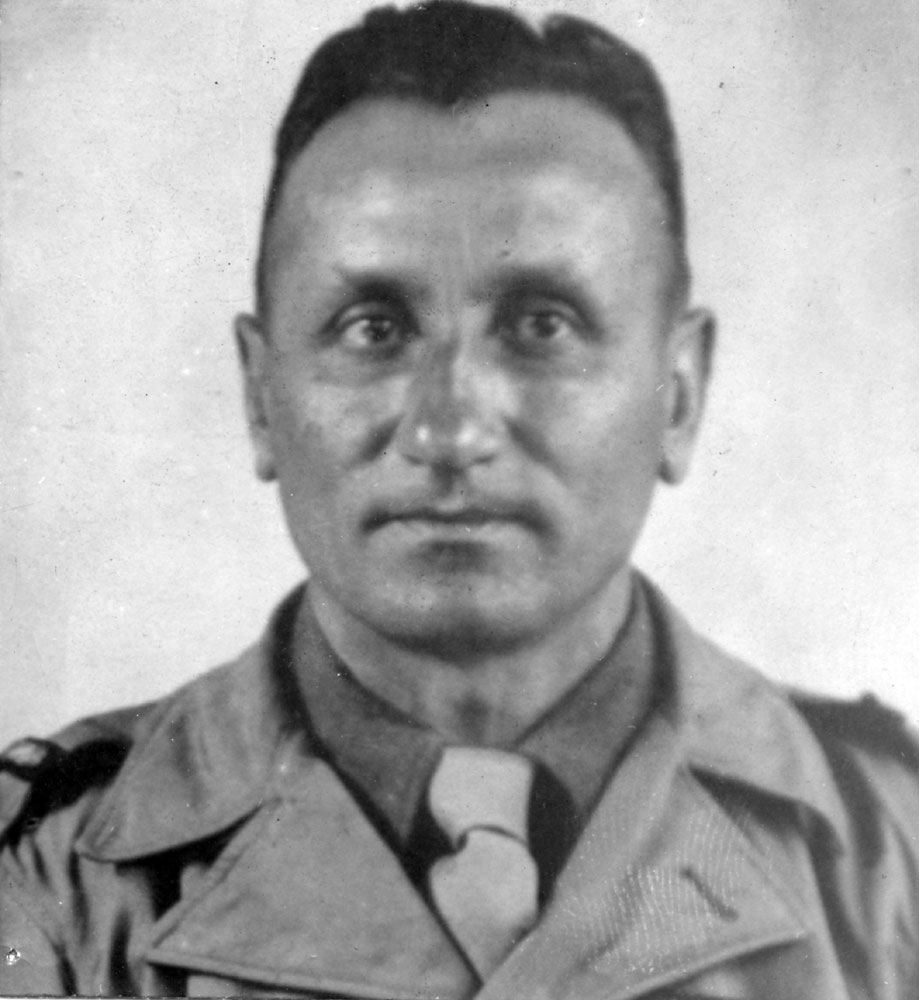Antoine Bissagnet
Genre : Image
Type : Portrait
Source : © Musée de l’Ordre de la Libération Droits réservés
Détails techniques :
Photographie argentique
Date document : sans date
Contexte historique
Antoine Bissagnet est né le 6 mai 1905 à Tunis. Il entre dans l'administration coloniale en septembre 1931 en qualité de commis stagiaire des services civils. Il est l'un des rares Français qui s'engagent dans les troupes franquistes et participe à la guerre d'Espagne. Nommé adjoint des services civils le 1er janvier 1938, il sert en Côte-d'Ivoire puis au Sénégal.
Il se trouve à Foundiougne où, le 20 septembre 1940, il se met sous les ordres du commandant Hettier de Boislambert, envoyé en mission spéciale par le général de Gaulle sur le territoire de l'Afrique occidentale française (AOF) afin d'y organiser la Résistance. Il se rend avec lui à Dakar et participe aux actions qui, du 23 au 25 septembre, permettent la neutralisation d'une partie des forces aériennes et terrestres. Lors du bombardement de Dakar, il poursuit l'exécution de sa mission avec un sang-froid et un dévouement absolus. Après l'échec allié devant Dakar ils se replient, Boislambert et lui-même, vers la Gambie. Mais, tombant dans une embuscade, ils se trouvent séparés. Parvenu à la frontière britannique, Antoine Bissagnet n'hésite pas à revenir en territoire ennemi, dans l'espoir de retrouver le commandant Claude Hettier de Boislambert. Arrêté le 30 septembre, blessé, il est emprisonné à Dakar, Bamako, Alger, Marseille, Clermont-Ferrand, Saint-Etienne et enfin à Gannat où il retrouve le commandant de Boislambert, lui aussi emprisonné. Le 11 juin 1941 il est condamné par la cour martiale supérieure à 20 ans de travaux forcés. Il s'évade de la prison civile de Gannat, toujours avec Boislambert, le 2 décembre 1942. Il franchit la frontière espagnole, séjourne au Camp de Miranda et regagne Londres en janvier 1943.
Nommé administrateur adjoint de 3e classe des Colonies à titre exceptionnel par le général de Gaulle, Antoine Bissagnet est également membre de l'Assemblée Consultative d'Alger où il est le délégué de l'AOF. Elu Secrétaire de l'Assemblée, il reprend malgré tout sa place de sous-lieutenant d'Infanterie Coloniale au sein du Régiment de Marche du Tchad (RMT) de la 2e DB du général Leclerc et participe à la campagne de Normandie. Antoine Bissagnet trouve la mort au combat, le 10 août 1944, au cours de l'attaque de l'église de Doucelles (Sarthe), qui se trouvait aux mains des Allemands. Il est inhumé à Saint-Clar, dans le Gers.
Antoine Bissagnet est Compagnon de la Libération et titulaire de la Médaille de la Résistance avec rosette.
Antoine Bissagnet was born on 6 May 1905 in Tunis. In September 1931, he joined the colonial administration as a trainee assistant in civil services. He was one of the few Frenchmen who committed themselves to the pro-Franco troops and participated in the War of Spain. Appointed as assistant of civil services on 1 January 1938, he served in Ivory Coast and later in Senegal.
On 20 September 1940, he was in Foundiougne and joined the unit of Commandant Hettier de Boislambert, who had been sent to the French West African territories (French: AOF) on a special mission by General de Gaulle, in order to organize the resistance in that area. The two of them then went to Dakar and participated in the actions from 23 to 25 September, which enabled the neutralization of parts of the aviation and ground forces. During the bombing of Dakar, he coolly pursued the completion of his mission with absolute devotion. After the failure of the Allies in Dakar, he and Boislambert left the country and went to Gambia. But as the two ran into an ambush they were separated. Having reached the British border, Antoine Bissagnet did not hesitate to return to enemy territories, with the hope of retrieving Commandant de Boislambert. Arrested on 30 September, wounded, he was imprisoned in Dakar, Bamako, Algiers, Marseille, Clermont-Ferrand, Saint-Etienne and finally in Gannat where he was reunited with Commandant de Boislambert, who was imprisoned there, too. On 11 June 1941, the superior martial court sentenced him to 20 years of forced labor. On 2 December 1942, he escaped from the civil prison of Gannat, together with de Boislambert. He crossed the Spanish border, stayed in the Camp of Miranda and returned to London in January 1943.
Appointed as a third-class administrative unit assistant of the colonies with special recognition, by General de Gaulle, Antoine Bissagnet was also a member of the Consultative Assembly of Algiers where he was the delegate of the AOF (French territories in Western Africa). Elected as secretary of the Assembly, he decided, despite all that, to take back his post as lieutenant of the colonial infantry within the Regiment of Chad (French: RMT) of the second tank division of General Leclerc, and participated in the campaign of Normandy. Antoine Bissagnet was killed in action on 10 August 1944, during the attack on the church of Doucelles (Sarthe) that was occupied by German troops. He was buried in Saint-Clar (Gers).
Antoine Bissagnet was made Companion of the Liberation and received the Medal of the Resistance decorated with a bow.
Traduction : Felix Uebel
Source : Site internet du musée de l'Ordre de la Libération



 Voir le bloc-notes
()
Voir le bloc-notes
()